QuestionHi, We have a 28gallon freshwater tank that has been going well for about 2 weeks. We have 3 guppies, 1 rainbow, 1 platy, and 2 mollies. I have been checking the ph regularly like the manager at the local pet store recommended. It's been about 7.2, my understanding of this is it is good. Am I right?? I go to the store regularly and ask a lot of questions, but everyone seems to give different answers. I really don't know who is right. Do I feed once or twice a day? Do I feed different foods or are the tropical flakes good enough for the fish I currently have? We are planning to add some more and think we should probably add some bottom dwellers. What do you recommend? Do we need to have some algae eaters in there too? Also, what is your opinion on frogs in the tank with these fish? Any info will be appreciated. thanks!!!
AnswerHi Stephanie,
Actually pH isn't all that important to fish as is the ammonia, nitrite and nitrate level. These are the most important things to monitor on a regular basis, especially since your tank is new. You see, recently setup tanks don't have enough of the beneficial bacteria which convert ammonia (from fish waste) into nitrite and then later into nitrate. Ammonia can be very toxic to fish so testing your water for that is vital for their health. Its good to test your water everyday until the tank has cycled or established which is indicated by ZERO ammonia and nitrite and a moderate amount of nitrate (which isn't toxic).
As far as feeding. It's really best to feed twice a day a small amount. This is better for the fishes digestive system to have little meals frequently than just 1 big meal, it also helps duplicate how they'd eat in nature.
Its also very beneficial to give your fish some variety. Usually not any one food provides all the nutrients fish need to be healthy and thriving and providing some variety in your fishes diet is the best way to make sure they get the nutrition they need. A staple diet of good-quality flake food will work, but make sure to supplement it with feeding frozen foods like brine shrimp, worms and others as well as freeze dried foods (make sure to presoak before feeding) and many fish enjoy vegetable matter in their diet -- algae wafers are usually enjoyed by most fish. I'm not sure what kind of fish you have right now so I can't give a definite answer. Knowing your fish and their diet requirements can help you in deciding what kind of diet they should have.
Before you add anymore fish, make sure your ammonia and nitrites are both ZERO or otherwise your fish could literally poison themselves with their own waste. You can usually bring a sample of your water into a petstore and they usually test it for free or you can just get test kits yourself which is so much easier. If your ammonia and nitrites read out ZERO then its safe to start slowly adding more. You don't want to add too many to avoid overwhelming your tank too soon. Just about 3-4 small fish per week should be fine.
For bottom feeders my most favorite is the Cory catfish or Corydoras catfish. These are little catfish that never grow past 2 inches. They are very cute, peaceful, hardy and active schooling fish that work hard to search the bottom for little bits of missed food. But you should not force them to scavenge for their meals alone and they should be fed just like any other fish. Sinking pellets and tablets are enjoyed by cories and these little catfish love frozen worms too. Feed them once a day at night when the lights are out. They are both diurnal and nocturnal so they can be out in the open at any time. Usually they often come out for food when the other fish are being fed, hoping to find leftovers.
You don't need algae eaters actually. Good regular tank maintenance will keep algae problems at bay. But if you'd like some kind of Algae eaters. I recommend either the Otocinclus catfish which is a tiny 1" algae eater who is very peaceful and easy to care for. Or the Bristlenose pleco which never grows past 4 inches or so and is a very good algae eater. Avoid the common pleco and Chinese algae eater which are the most frequent algae eaters sold in stores. The common pleco grows up to a foot long and is a big tank polluter and the Chinese algae eaters grows large as well and has the bad tendency to become aggressive towards other fish.
Frogs are fine with fish. The main problem with frogs and fish together is the frogs often starve because the fish eat all their food before they can get it. One way you can battle this is to directly feed the frogs everyday with a little eyedropper. Frogs generally need frozen meaty foods and using an eyedropper, you can usually squirt a little food in front of them and they can eat that way but you may still be battling the fish. If you can make sure the frogs are wellfed everyday and they have some hiding places and they don't live with any aggressive fish then usually frogs and fish get along fine.
Best of luck with everything!
I hope this helps!
Karen~

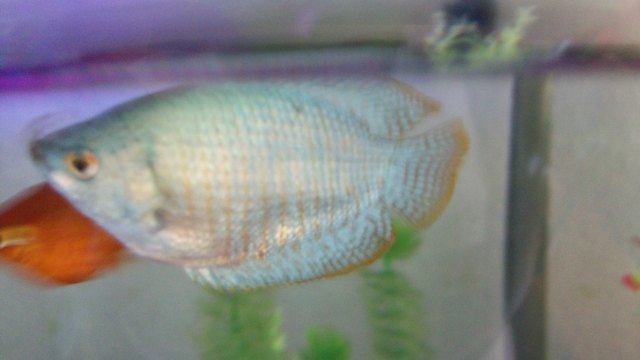 Putting a Female Dwarf Gourami with my 2 Male Dwarf Gouramis
QuestionGouramis
QUESTION: Hello! Have a few Gou
Putting a Female Dwarf Gourami with my 2 Male Dwarf Gouramis
QuestionGouramis
QUESTION: Hello! Have a few Gou
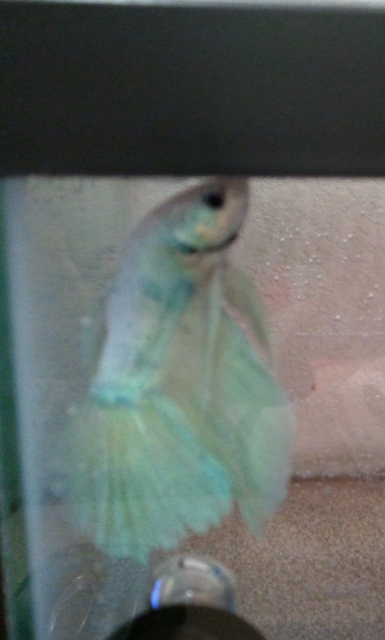 Betta resting vertically
QuestionLunar resting vertical
QUESTION: The bet
Betta resting vertically
QuestionLunar resting vertical
QUESTION: The bet
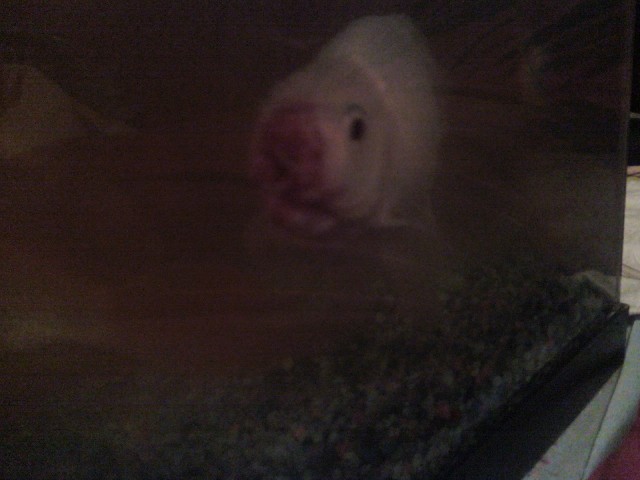 Broken lips
QuestionQUESTION: Hello expert, i hope you can help me.
Broken lips
QuestionQUESTION: Hello expert, i hope you can help me.
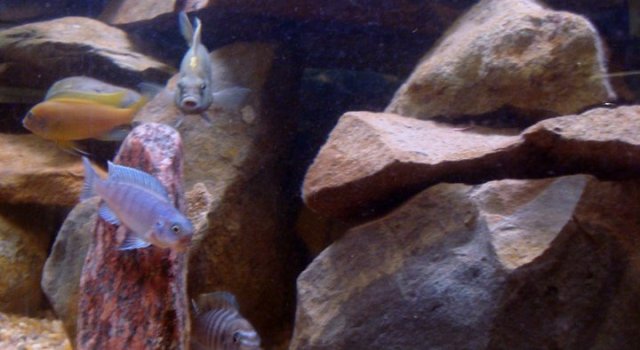 Cichlids overcrowding good or bad?
Question
a few of the fish
Hi I have a 40 gallon bow ta
Cichlids overcrowding good or bad?
Question
a few of the fish
Hi I have a 40 gallon bow ta
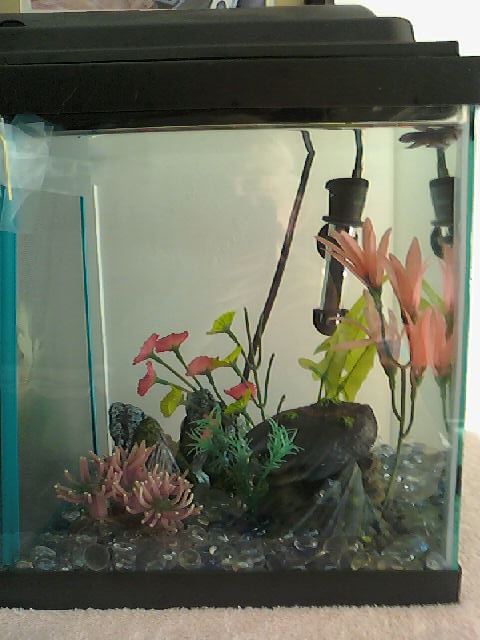 Lethargic Betta Fish
QuestionDorothy
QUESTION: Dear Jaymie,
For the
Lethargic Betta Fish
QuestionDorothy
QUESTION: Dear Jaymie,
For the